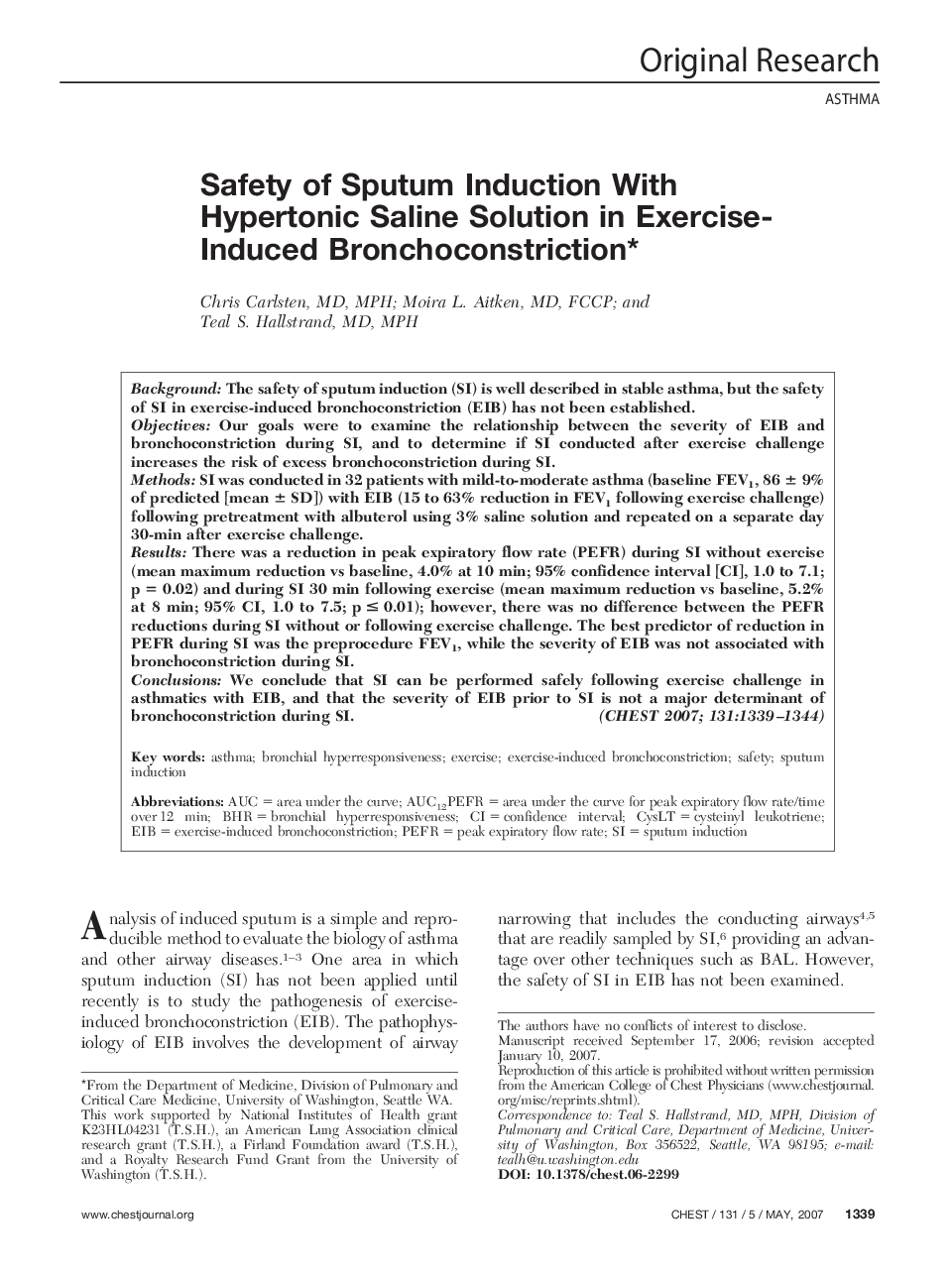| Article ID | Journal | Published Year | Pages | File Type |
|---|---|---|---|---|
| 2904704 | Chest | 2007 | 6 Pages |
BackgroundThe safety of sputum induction (SI) is well described in stable asthma, but the safety of SI in exercise-induced bronchoconstriction (EIB) has not been established.ObjectivesOur goals were to examine the relationship between the severity of EIB and bronchoconstriction during SI, and to determine if SI conducted after exercise challenge increases the risk of excess bronchoconstriction during SI.MethodsSI was conducted in 32 patients with mild-to-moderate asthma (baseline FEV1, 86 ± 9% of predicted [mean ± SD]) with EIB (15 to 63% reduction in FEV1 following exercise challenge) following pretreatment with albuterol using 3% saline solution and repeated on a separate day 30-min after exercise challenge.ResultsThere was a reduction in peak expiratory flow rate (PEFR) during SI without exercise (mean maximum reduction vs baseline, 4.0% at 10 min; 95% confidence interval [CI], 1.0 to 7.1; p = 0.02) and during SI 30 min following exercise (mean maximum reduction vs baseline, 5.2% at 8 min; 95% CI, 1.0 to 7.5; p ≤ 0.01); however, there was no difference between the PEFR reductions during SI without or following exercise challenge. The best predictor of reduction in PEFR during SI was the preprocedure FEV1, while the severity of EIB was not associated with bronchoconstriction during SI.ConclusionsWe conclude that SI can be performed safely following exercise challenge in asthmatics with EIB, and that the severity of EIB prior to SI is not a major determinant of bronchoconstriction during SI.
